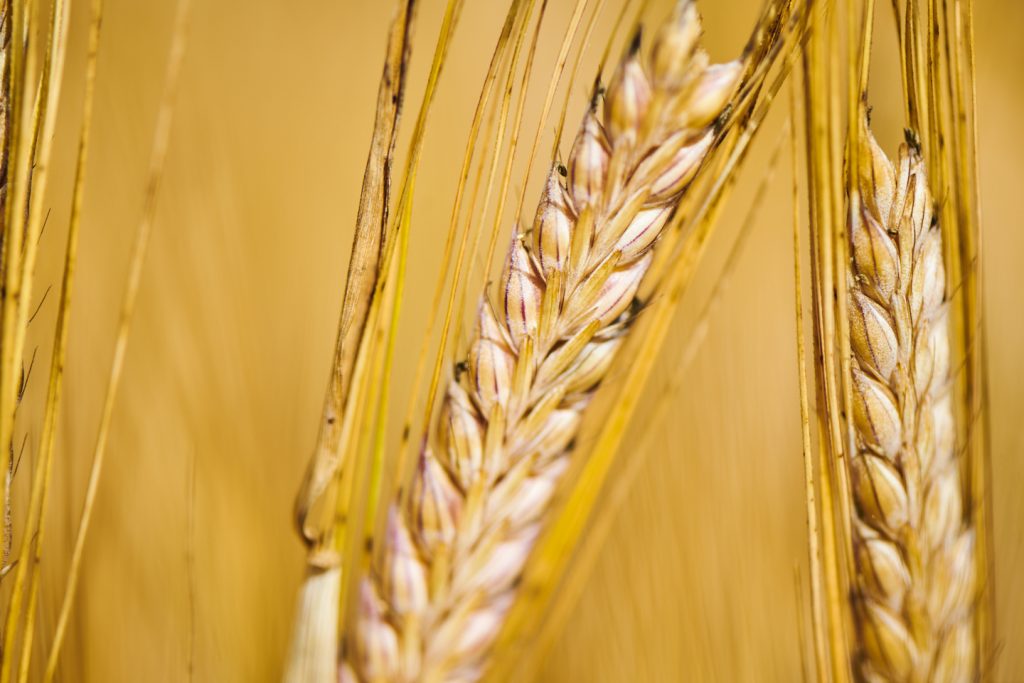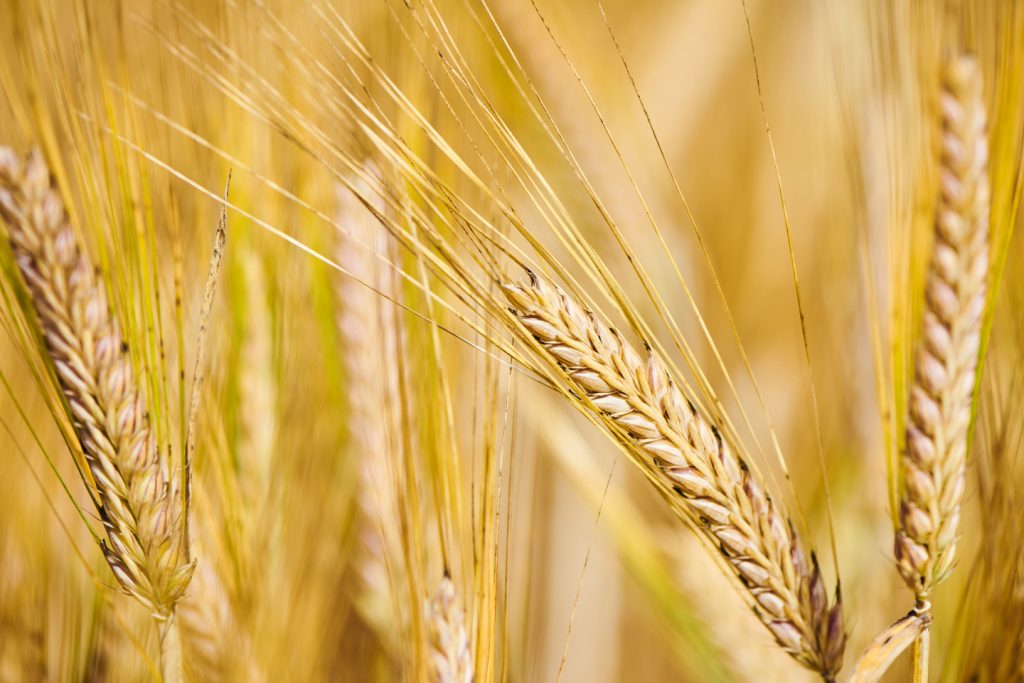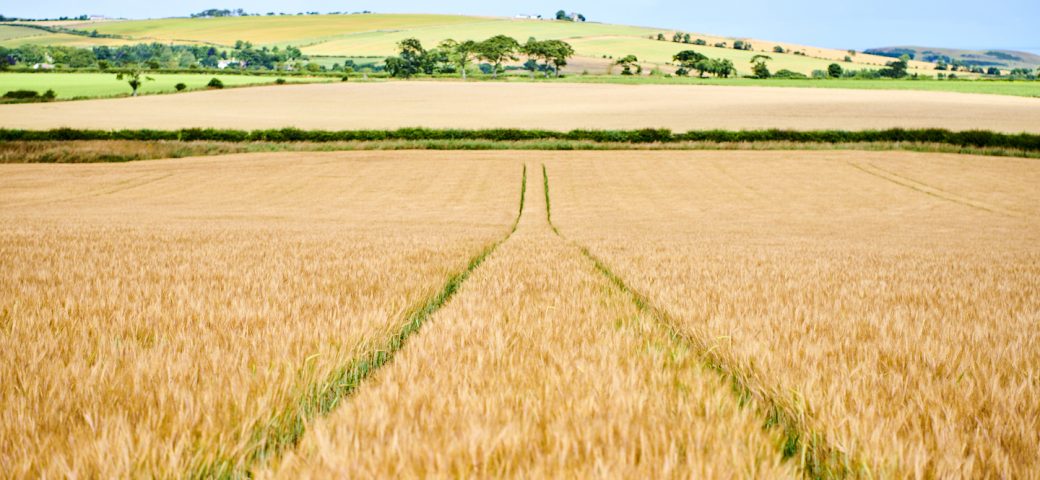Global demand for barley has risen considerably over the past 12 months and consumers throughout the supply chain are experiencing the knock-on effect with increased costs.
In this blog, Senior Grain Trader at our agricultural merchanting division McCreath Simpson & Prentice, Mike Dagg, explains the contributing factors behind the rise and rounds up the 2021 barley harvest in both the UK and overseas.
2020 barley harvest
Firstly, it’s best to head all the way back to the 2020 harvest. From a UK and EU perspective, the supply of malting barley was relatively plentiful with a total barley crop of 62 million tonnes. The UK contributed 8.3 million tonnes of that figure.
We were also trading in an environment where demand for malting barley was reduced from the previous year. This was due to COVID-19 becoming a global issue, resulting in the shutdown of the pub and hospitality sectors.
Consequently, the premium for malting barley over feed barley was small as supply outstripped demand.
From a global perspective, world barley production was more than 150 million tonnes.
Essentially, there was ample supply of barley and buyers were relaxed.
What changed in the barley markets?
The dynamics of the global market for barley started to change in November 2020, with China the catalyst.
At that time, China was in a lengthy trade dispute with Australia, who were traditionally the primary supplier of both feed and malting barley into the Chinese market. This dispute is still ongoing.
As a result, China came to the EU – primarily France – to source barley. The result was that France exported between 3.5 million and 4 million tonnes of 2020 crop to China.
This volume of barley going from France to China severely impacted the EU supply and demand balance sheet. The price of feed and malting barley within the EU started to climb rapidly.
The other issue that impacted the global supply and demand balance sheet for barley was that global corn and wheat production was less than forecast from 2020 crop.
As a result, the global value of wheat and corn began to rise, and barley followed. Barley was, for the reasons mentioned above, the cheapest commodity globally. This was especially true in the UK, where barley on the delivered market in autumn 2020 was trading at a £45 discount to wheat.

Use of barley in other industries
Consumers, particularly the animal feed compound industry, were quick to pick up on this. They began to steadily increase the use of barley in animal feed rations.
By late spring 2021, the value of UK feed barley had risen by £60 per tonne from the values we witnessed during the 2020 harvest. By the end of June, approximately 5.5 million tonnes of barley had been used by UK compounders and for on-farm feeding. This was opposed to a five-year average of 4.2 million tonnes.
Also supportive to the barley market was the success of the UK vaccination programme against COVID-19. The hospitality sector reopened in early summer, which meant demand from brewers and distillers returned to normal.
2021 barley harvest worldwide
It is important to understand what is currently going on in the global feed grains market as this directly impacts the domestic UK market. The global feed grains market is currently well supported as crop production issues prevail.
In South America, the Brazilian corn crop has seen overall production downgraded from 120 million tonnes to 87 million tonnes.
In North America, a severe drought has downgraded both corn, wheat and barley production. The USA’s barley production has decreased from 3.5 million tonnes to 2.3 million tonnes. Canada’s barley production was 6.5 million tonnes against a USDA (United States Department of Agriculture) forecast of 12.5 million tonnes. Canadian wheat production was also down from a forecast of 31.5 million tonnes to 22 million tonnes.
Closer to home, the August USDA report lowered Russian wheat production from 85 million tonnes to 72.5 million tonnes.
In summary, the global feed grains market is well supported and will remain so well into 2022.
There are good news stories in terms of grain production such as Australia and Ukraine.
But for global grain prices to decline, we require plentiful harvests in the southern hemisphere then northern hemisphere next year as a minimum.

2021 barley harvest UK & EU
This year’s malting barley harvest in the UK has been an average one.
Winter barley production in the UK was mixed. Nitrogen content was good, but retention (grain size) was mixed, with a proportion of the crop lost to feeding.
The spring barley harvest in England produced good yields and low nitrogen barley.
In Scotland, the malting barleys were low nitrogen and had good retention, but yields can be described as average at best. In 2020, the Scottish spring barley yield was recorded at 6.85 tonnes per hectare and, in 2021, it’s around 6.0-6.1 tonnes per hectare. What this means in terms of supply is that this year, Scotland has produced a spring barley crop in the region of 1.5 million tonnes, whereas it was 1.77 million tonnes in 2020.
In the EU, things weren’t as good. France harvested an average winter and spring crop in terms of quality and yield. Germany was average at best and, in both Poland and Czech Republic, it was disappointing.
Elsewhere, Denmark had good quality barley but below average yields. Sweden had high nitrogen, while Finland’s harvest was described as catastrophic.
Essentially, the 2021 malting barley harvest was a very mixed bag.
The harvest, combined with other factors such as the global feed grains market and the well-documented pressure on the global supply chain – freight rates for commodities being shipped around the world are currently through the roof – means that the price of malting barley is high.
Summary
We are currently operating in a ‘bull’ market in terms of wheat, corn and soya, with barley following in the wake of that.
Nothing goes in a straight line upwards forever and there will no doubt be a correction in global grains values at some stage.
However, we don’t foresee a return to the values of malting barley which were prevalent for harvest 2020 at all in the near future.
More from Simpsons Malt
- An Introduction to UK Barley and how it is grown
- Golden Promise: The complete story of this heritage malt
- How is Crystal Malt made?
- Why does UK Barley make such good Malt?
- Storing Malt: A complete guide
- Golden Promise: Growing this heritage barley variety
We hope you found this article informative! Don’t forget to follow us on Facebook, Twitter or Instagram.

